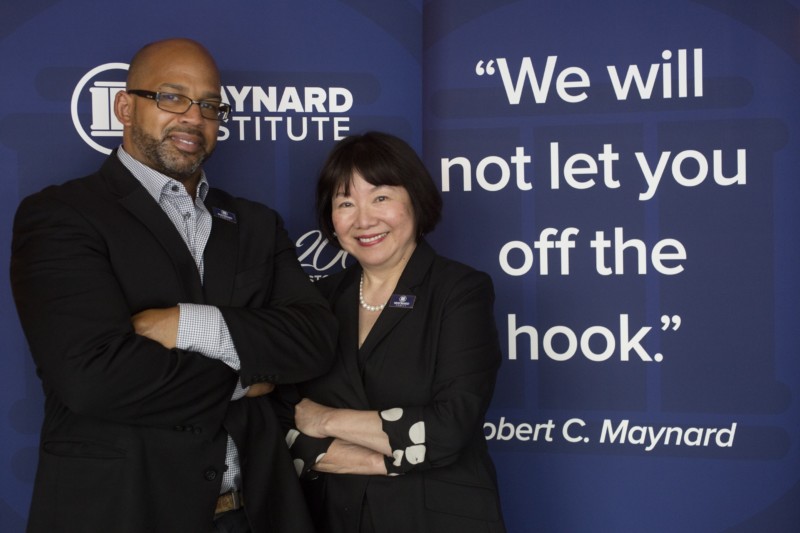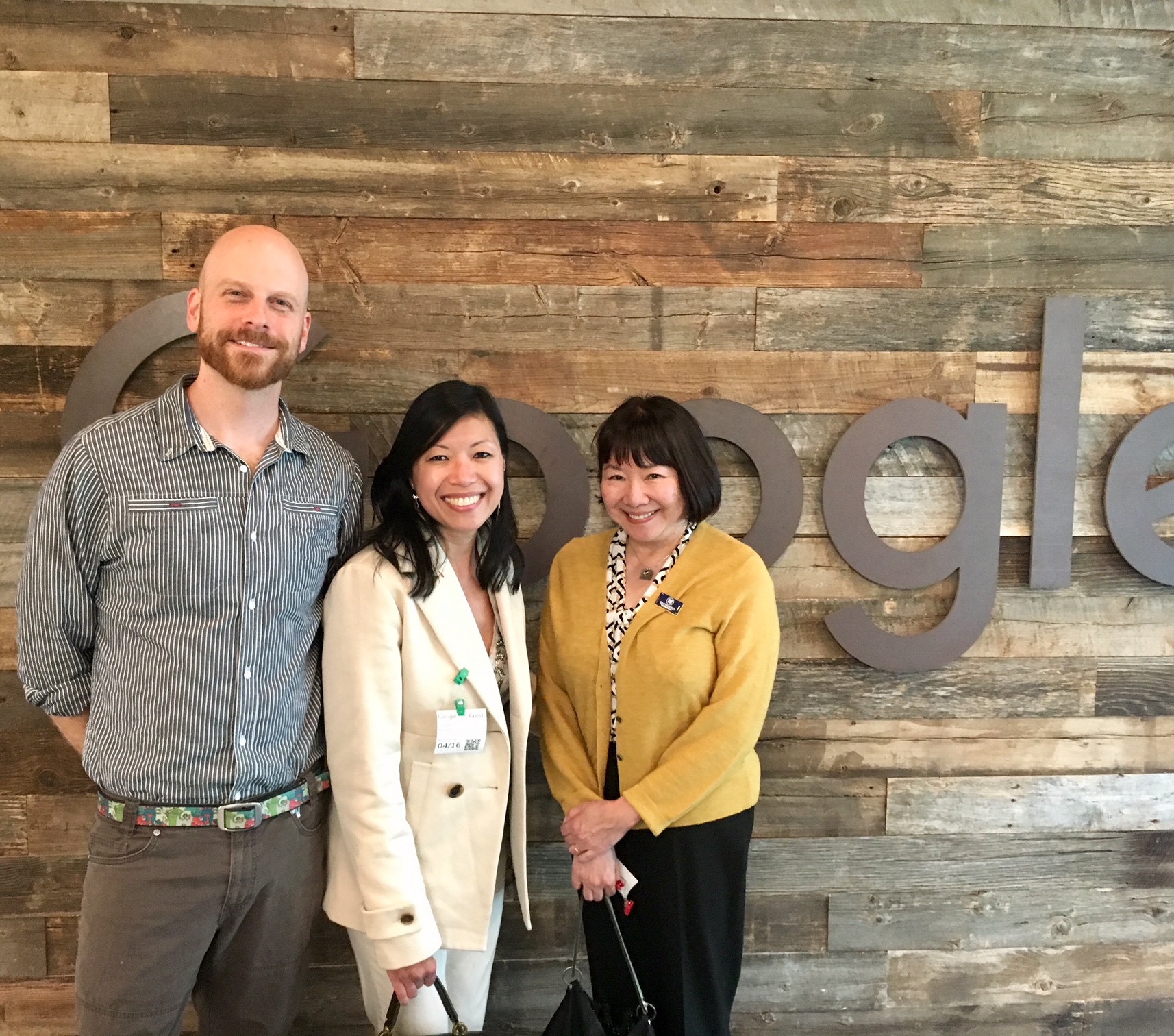Sign up for The Media Today, CJR’s daily newsletter.
It’s one thing to aim to increase diversity in media. It’s another to significantly expand the pipeline of talent.
That’s what The Robert C. Maynard Institute for Journalism Education aims to do through its Maynard 200 Fellowship, which will offer training to 200 journalists over the next five years. Three groups are encouraged to apply: new managers, or those who are considering entering management; journalism entrepreneurs; and journalists and producers. The latter category also includes staffers and freelancers from nontraditional and community outlets.
ICYMI: As newspapers cut their opinion sections, African American voices take a disproportionate hit
Martin Reynolds, co-executive director of the Maynard Institute, tells CJR that the program came out of trying to pinpoint the most pressing needs of today’s media industry with regard to training, as well as key issues around diversity hiring, retention, and inclusion. “We found that the pipeline issue has become a real challenge,” Reynolds says. “The losses between 2008 and 2011 of journalists as a whole [and] journalists of color [were impacted] even more, unfortunately. We found that the institute had an opportunity to really think about the next generation.”
After several rounds of strategic planning and surveying more than 500 journalists, the Institute realized the importance of including journalism entrepreneurs in the program in concert with the other two groups. “We couldn’t only focus on leaders and storytellers, because [then] are we going to continue to sort of funnel people into these traditional news organizations that aren’t always happy to see them?” Reynolds says. “We also want to focus on entrepreneurship, [with] the notion that this next cohort of Maynard graduates could go out and make their own media that is reflective of them, and themselves and their communities.”
The idea to include nontraditional and community outlets came from organizations such as Oakland Voices and City Bureau in Chicago, which both trains residents to be storytellers and journalists. “There’s all this stuff going around the country, where people are being engaged to tell stories and to participate in the journalistic process,” Reynolds says.
“What I was really excited about bringing to this program—which truly is open to journalists of all backgrounds across the country—was this opportunity [to] reach underserved media spaces, especially geographical regions that don’t have as much media resources, where journalists of all backgrounds and especially journalists of color need the most support and training,” adds Odette Alcazaren-Keeley, director of the Maynard 200 program.

Maynard Institute Co-Executive Directors Martin Reynolds and Evelyn Hsu. Courtesy photo.
Maynard Institute Co-Executive Director Evelyn Hsu says lack of training opportunities in newsrooms is also a factor in attrition rates, citing a 1993 report by the National Association of Black Journalists. One of the reasons for attrition, the study found, was the perceived lack of opportunities to position oneself for promotion. “Maybe 10 or 15 years ago training was much more robust,” Hsu says. “As the traditional news organizations shrank, I think all of that fell by the wayside and they had to focus basically on [making] payroll.”
The program’s focus on management also comes from the realization that newsrooms still don’t have many older staff for young journalists of color to look up to and be mentored by. “The culture of the organizations themselves were not necessarily hospitable to diverse folks,” says Reynolds.
The Maynard Institute says its research revealed that new media organizations also have problems with diversity. “Those in the digital space were making a similar mistake as their predecessors, and didn’t necessarily think that there needed to be the internal structures in place that legacy organizations did, in some cases, put into place to bring people in,” says Reynolds, noting the executive teams of some new media organizations were statistically even whiter and more male than their legacy counterparts. “It wasn’t better. The lessons had not been learned.”
Alcazaren-Keeley says hiring journalists of color isn’t enough if newsrooms, both digital and legacy, continue to put them in boxes that diminish their perspectives, due to concerns about advocacy or bias. “Are they really being listened to?” she asks. “Is their voice really heard in that editorial process? Everything that the reporter brings—that context, that cultural sensibility, that life experience as a person of color coming in and looking at the issue in just a whole new way—is lost….Right now, so many programs out there are trying to really bridge that gap.”
If moral and financial imperatives haven’t moved managers and newsrooms to truly take diversity more seriously after 50 years, Reynolds says the conversation around trust and transparency should, citing findings and research from The Trust Project at the Markkula Center for Applied Ethics. “One of the key indicators [for trustworthy content online] was diverse voices and diverse perspectives,” he says. “It’s an exciting development because it enables us to actually make an argument that is unique and different, and it’s two words that journalists get: trust and credibility. If that’s what triggers folks to say, ‘Dang, this is important, we need to make a change so we can be viewed as trustworthy and credible,’ then I think that that’s a great opportunity.”
Funding for The Maynard 200 fellowship comes from the Google News Lab, the New Venture Fund, the News Integrity Initiative and Craig Newmark Philanthropies (Craig Newmark is a CJR board member, and his craigslist Charitable Fund is a funder of CJR), as well as partnerships with USC Annenberg and the City University of New York.
The first cohort of 15 participants will undergo two weeks of training in Boulder, Colorado, and at USC Annenberg in Los Angeles, with all travel, housing, and expenses covered by funders. Applications are due by Tuesday, June 5, at 1pm PST.
ICYMI: NYT Magazine’s Rita Dove on what poetry might grant unsuspecting news readers
Has America ever needed a media defender more than now? Help us by joining CJR today.



